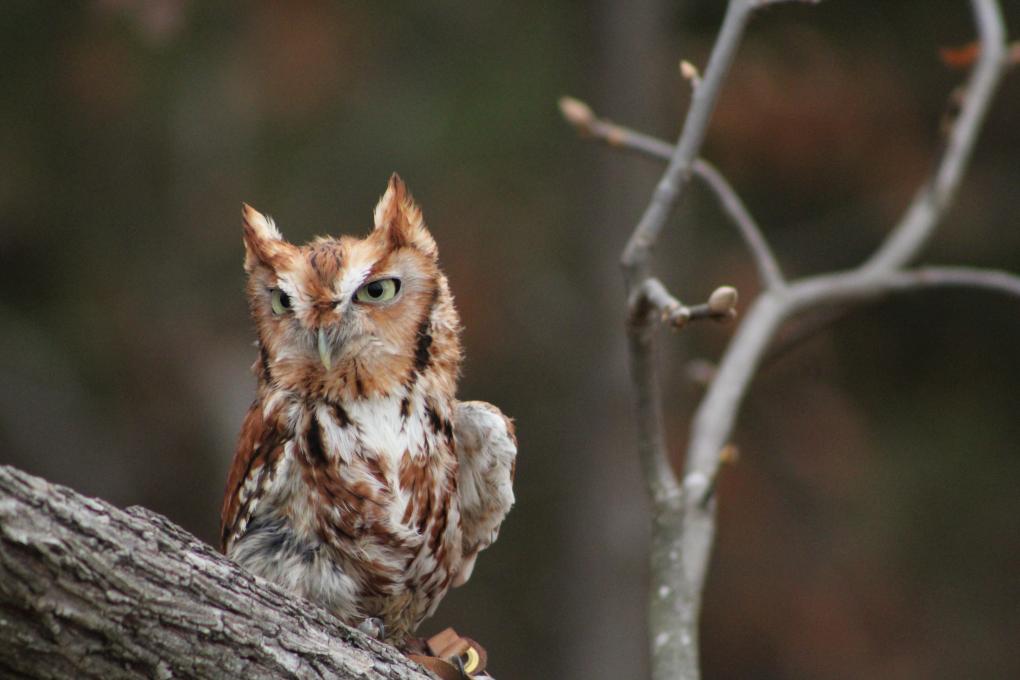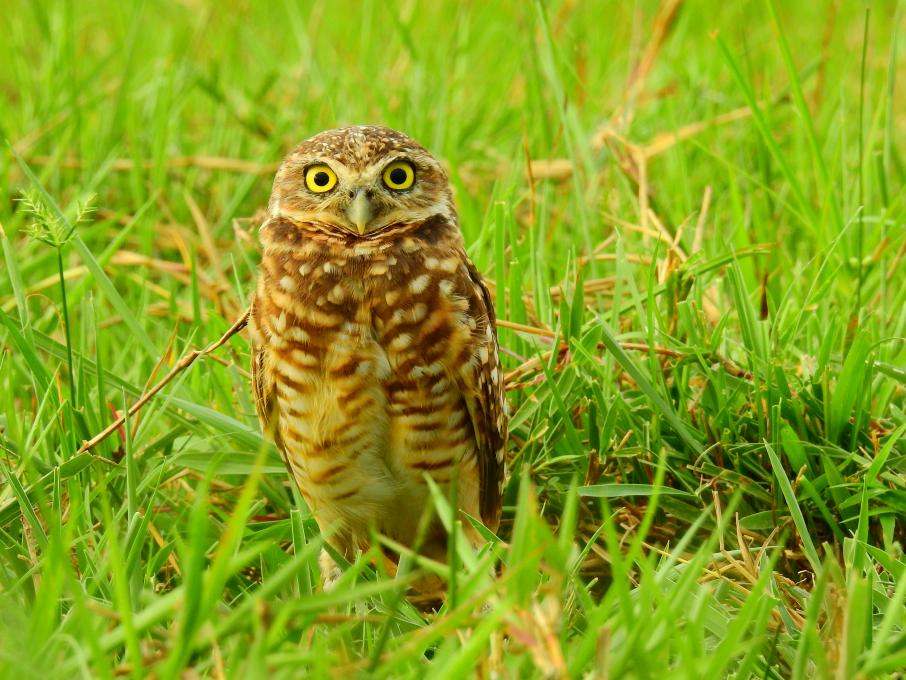The Cornell Lab Bird Academy › Discussion Groups › The Wonderful World of Owls › Find the Hidden Owl
-
There is so much to choose from that is memorable. I would have to go with listening and knowing their calls to identify them, and ways people can help them like building nesting boxes.
-

-
For me, it is the "Hoots, Toots, and Screech" segment of Owl sounds. I really enjoyed hearing the sounds of the different types of Owls!
-
I particularly enjoyed learning: - the many different species - I knew there were quite a few, but didn't realize there are 234 - silent flight and the anatomy of their eyes and ears - the irruptive nature of some species and why - was also fascinated to note the max. life spans of the owls that are in my area Thank you for a great course.
-
I enjoyed the Barred Owl duet!
-
I really enjoyed this course. I love the fact I know more information about owls especially learning how to find them since I always wanted to find myself an owl. This course made me more aware of the owls around me. I’ll keep an eye out if I see any pellets, white wash, and have my window open at night if I ever hear a hoot. This course also motivates me to get myself a nest box for owls in my back yard.
-
This course is wonderful. I enjoyed every moment, every video, every photograph, every teaching, every link. It is a very complete course of owls. I learned their characteristics, sounds, how they live, how they reproduce, where to find them and how to do it, I learned aspects of the biology of a large number of species of owls from all over the world that I hope one day to. I´m very grateful to Bird Academy and our teacher Kevin McGowan for their invaluable teachings. Thank you very much
 Burrowing Owl (Athene cunicularia), Orinoquía Region, Colombia
Burrowing Owl (Athene cunicularia), Orinoquía Region, Colombia -
I learned so much I don't really know where to begin. I think looking for whitewash and pellets along with learning to recognize their calls will help me the most. They are amazing birds!
-
There was so much to break down in this course that almost everything I've learned has become memorable! If I had to list some of my favorites, they'd have to be: - When an owlet has started to branch out of their nest, if they fall they'll climb back up into a tree - If you observe an owl's feet you can tell what their diet consists of - Their ears are uneven - An owl cannot move their eyes
-
I really enjoyed this course! I liked learning about the superb owls and more of my 2 favorite owls the little owl and the burrowing owl. I did not knew that owls had ears or that many could be diurnal. I thought the only exception was the burrowing owl. I liked learning about owl pellets and their family life. I enjoyed learning that they were zyglodactyl. I know now more names like aegolius funereus, tyto alba, strix occidentalis, strix varia, bubo bubo, bubo virginianus, athene noctua, and athene cunicularia. I liked the boo-book sound. It seemed fun to me the clacking of the long eared owl. I want to help owls now. Although I have not(yet) seen owls I hope that with the suggestions it will help me to find it. I REAAAAAALLY ENJOYED THIS COURSE!!!!
-
I loved learning about owls. The most memorable pieces of information was learning about the different species of owls, and their calls.
-
I loved learning about owls that I had no idea existed! Of course owls live all over the world, but I didn't realize how different they could be! I especially liked learning about super rare owls.
-
enjoyed learning about the biology of silent flight.
-
I greatly enjoyed this course! It was so much fun learning all about owls. I think my most memorable moments with these lessons included learning about the different species of owls. I had no idea there was so much variety in this bird family! Studying the marvelous designs of the individual owls was fascinating. Of course, I was also glad to study owl sounds and to learn new techniques for finding owls, engaging with them, and helping them continue their role as valuable predators in the ecosystems they inhabit.
-
There have been so many memorable pieces of information! I think the tip to look for whitewash really stands out, and I also really liked seeing the different ways owls have been depicted in culture. My favorite lesson was learning how to identify them by sounds.
-
Seeing the birds in flight is always a joy, the wonderful photos and the duets captivate.
-
I would say, that the knowledge of looking for a 'white-wash,' is helpful, when looking for Owl homes, in trees. That is the best way to tell if there is a large, raptor style bird, in the area. Especially Owls. Gross, but helpful. Also, the different Owl sounds we learned, are helpful. I knew the basic, 'hoot hoot.' But now, I can practice about 3-5 sounds, from the list. Lastly, the Owl classifications and populations are good to know, especially the spooky, ethereal, Sri Lanka Owl, Boobook, and Congo Bay Owl. It is not easy to learn about jungle, foreign Owls. Now I know.
-
-
<li style="text-align: left;">I find that owls are very interesting. I think that sound is the best way to find them, but if you want to see them, i suggest looking for yellow in the middle of the green or brown. Personally, my favourite owl would be the screech owl, because i encountered one. This course was very helpful. And also not the first incredible course by the cornell lab. Thank you!
-
The wide variety of owls in the world and the large range of some owls as well as a number of species that only live on one island. Also did not realize that some owls of the same species have very different colors, with some being brown and others in the same species being gray.
-
Very good course. Most of the memorable information I'll take away is that related to the owls in my area, such as the Barred Owl, Great Horned Owl, and Eastern Screech Owl. Also, there was a very good few bits of information about Snowy Owls, which I have observed at a wildlife refuge somewhat nearby where I live this winter.
-
There are two: that they grasp with their talons in a two-two formation rather than three-one; and that they vocalize with their beaks closed.
-
Very cool course. Different from some of the other birding ones BUT it was interesting learning about the sight, feathers, and hearing of owls. I also liked the links to more in depth articles about owls. They are definitely a lot harder to find in most people's day to day life, but that is was makes the fascinating when you do. I am lucky and I live next to the Cuyahoga Valley National Park so I have seen some Barred Owls in a set location the last couple years........still would love to see a Great Horned Owl in person.
-
I enjoyed this course very much. The section on sounds was really informative and I will revisit it again. I will also enjoyed the photos of owls from different countries. Now I will keep an eye for those also.
-
My daughter and I really enjoyed this course. We hear owls, mostly Barred Owls frequently near our house. My question is I would like to look for these owls at night with a flashlight with a red filter. Is this okay or will the light still scare or harm the owl?
-
We have a similar question regarding the use of flashlights with or without a red filter when you are owling at night.
-
-
everything in this course was very informative
Read More:

 Burrowing Owl (Athene cunicularia), Orinoquía Region, Colombia
Burrowing Owl (Athene cunicularia), Orinoquía Region, Colombia